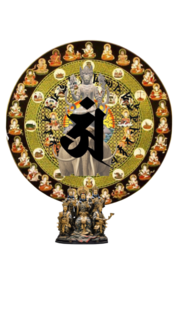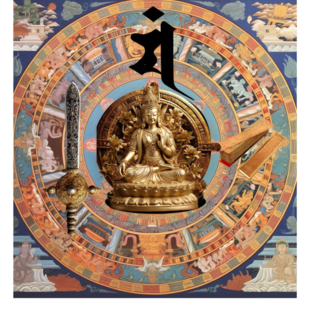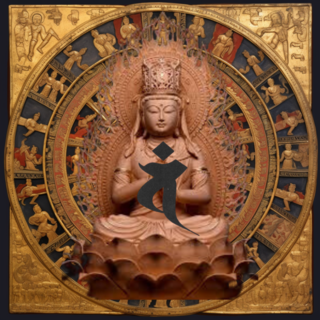「変身の原理」で、私は、カナダの著名な神経外科学の大家、W・ペンフィールドの発見 密教の持つすぐれた知能開発法寺聴法」のメカニズムの一端を解説した。 私はそのとき、「ひとたび修身するや、目はカメラになり、耳はテープレコーダーに変化し て、ひとたび目にし、ひとたび耳にしたことは永久に忘れなくなる技術である」と説明した。 たしかにその通りであるが、そのためにこの法を、一種の記憶力増強法、いわゆる記憶術の一 のようにうけとったひともあるようである。ページ数の関係その他の事情から十分に説明でき ず、それも無理のないことであったが、この技法が単なる記憶術のようなものであるのなら、た いした価値のないつまらないものといわればならない。なぜならば、ただ単に記憶がよくものお ぼえがよいというだけでは、ひとはよい仕事をすることができない。 ただたんにもの知りだけで はすぐれた業績をのこすことはできない。問題は、多量に持っている知識(情報)を、いかに活 用してあたらしいものを生み出すかというところにある。
い子とのよい子のちがい
ギャラップは、
たんな
そるべき技術である。 知能とはなにか。 ごく大ざっぱに分けるならば、二つの
であろう。記憶と創造である。 特聡明法は、この二つのはたらきをするメカニズムに、あた らしいメカニズムをつけくわえて、あたらしい力と効果を発揮する。
この技法が、ジョージ・ギャラップや、オルダス・ハックスリーのいうように教育にとり入れ られたならば、人類のうける利益は想像することもできないほどのものである。 ギャラップのい うように、ヒトは、まさに、未来に向かって数百年の飛躍をすることができるであろう。 そういうと、そんなすばらしい技術がどうして今まで世のなかにあらわれなかったのかと、あな たは疑問に思うかも知れない。
これほどの技術が、なぜ密教寺院の片すみに埋没してしまったのか、いくつかの理由があげら れるだろうが、その最大の理由はこうである。
すぐれた古い方法がまったく見落とされてきたということは奇妙なことだ。 それに、あと になって全く忘れ去られてしまっている非常に重要な技術を発達させた個人、あるいは文化がよ くあるのだ。しかし、それらはやはり大きな価値を持ちつづけているのだ』(
といっているが、この大きな価値を持ちつづけているすぐれた方法が忘れられてしまったわけ は、それにつづくギャラップのおなじ文章のなかに見出すことができる。
システムとしての間
あって、思い出される記憶と、思い出せない記憶の二つがあることを、私は、「変身の原理」 で説明した。脳の記憶のメカニズムはたいへん複雑で、それはまだ脳生理学でも十分に解明され ていないのだが、一応、その仕組みを見てみよう。
経験というのはひとつの刺激である。その刺激が記憶になるまでには、だいたいつぎのような 段階を経る
刺激を感じるのは、俗にいう「五感」である。 五感とは、視覚、聴覚、味覚、嗅覚、触覚をい うが、こまかくかぞえればまだ多くの「感覚」があり、おなかが空いたとか、なんとなくけだ るく気分がよくない、とか、そういう身体の内部におこっていることを知ることもできる。つま り、われわれの身体の内部、外部におきていることがわれわれ自身にひとつの影響をおよぼす。 これが、「刺激」である。
こういう刺激があると、身体にある「感覚器」または「受容器」というものがこれに反応し
電気的パルスを送り出す。 たとえば、 赤い花があれば、そこから反射された光が目のレンズ を通して受容器としての視神経を刺激し、視神経がパルスを送り出す。 これはパルスであって、 刺激の強さが大きければその数がふえるだけで、電圧が大きくなるわけではない。おなじよう に、皮膚になにかが触れれば、皮膚にある受容器が圧力を感じ、その圧力に応ずる数のパルスを 神経に送りこむ 次頁の上図は、このような受容器のいくつかの例である。
さて、このようにして受容器にあたえられた
Q&A as a system
In "Principles of Metamorphosis," I described some of the mechanisms behind W. Penfield's discovery of the remarkable intellectual development of esoteric Buddhism. At that time, I explained, "Once you practice, your eyes become cameras, your ears become tape recorders, and once you see them, and once you hear them, you never forget them." This is certainly true, but for this reason, some people seem to have accepted this method as a kind of memory enhancement method, a so-called memory technique. Due to the number of pages and other factors, it was not possible to fully explain it, and it was understandable, but if this technique is just a memorization technique, it must be said that it is worthless and trivial. For one cannot do a good job simply by having a good memory and a good memory. Mere knowledge alone does not enable him to leave behind outstanding achievements. The problem lies in how to utilize the vast amount of knowledge (information) we possess to create something new.
The difference between a good child and a good child
Gallup is
Sanna
It is a technology that should be improved. What is intelligence? Roughly speaking, there are two
Will. memory and creation. In addition to the mechanisms that perform these two functions, the Tokusōmei method adds a mechanism that is unique to her, and exerts new powers and effects.
If this technique were introduced into education, as George Gallup and Aldous Huxley say, the benefits to mankind would be unimaginable. Like Gallup's man, humans could just leap hundreds of years into the future. With that said, you may wonder why such a wonderful technology has not appeared in the world until now.
There are several reasons why such a technology has been buried in a corner of Esoteric Buddhism temples, but the biggest reason is this.
It is strange that the good old method has been so overlooked. Moreover, there are many individuals, or cultures, who have developed very important skills that have since been completely forgotten. But they still have great value.”
However, the reason why this superior method of continuing great value has been forgotten can be found in the same Gallup passage that follows.
between as a system
I explained in ``The Principle of Metamorphosis'' that there are two types of memories: memories that can be recalled and memories that cannot be recalled. The mechanism of memory in the brain is extremely complex, and it has not yet been fully elucidated even in brain physiology, but let's take a look at its mechanism.
Experience is a stimulus. Before the stimulus becomes a memory, it goes through the following stages.
It is commonly known as the “five senses” to feel stimuli. The five senses are visual, auditory, gustatory, olfactory, and tactile, but there are still many more “senses” if you count them in detail, and you can also know what is happening inside your body, such as when you are hungry, or when you feel sluggish and unwell. In other words, what is happening inside and outside our bodies has an effect on us. This is the "stimulus".
When there is such a stimulus, the "sensory organs" or "receptors" in the body react to it.
Sends out electrical pulses. For example, if there is a red flower, the light reflected from it stimulates the optic nerve as a receptor through the lens of the eye, and the optic nerve sends out pulses. These are pulses, and the greater the intensity of the stimulus, the greater the number, not the greater the voltage. Similarly, when something touches the skin, the receptors in the skin feel pressure and send out a number of pulses to the nerve corresponding to that pressure.
Now, given to the receptor in this way
【このカテゴリーの最新記事】
-
no image
-
no image







